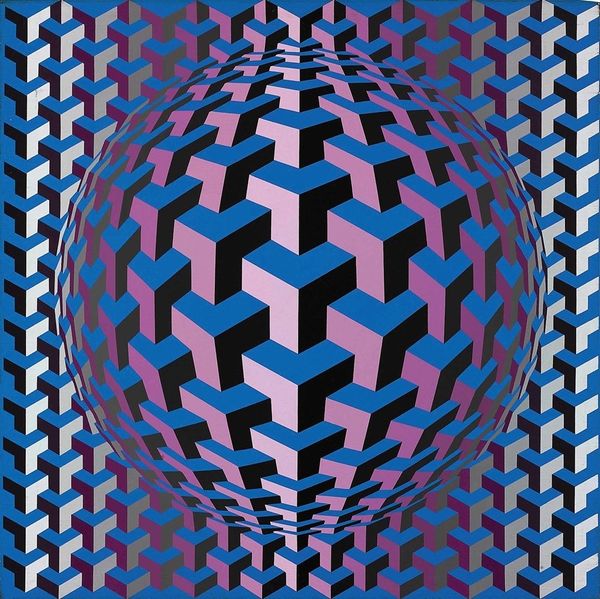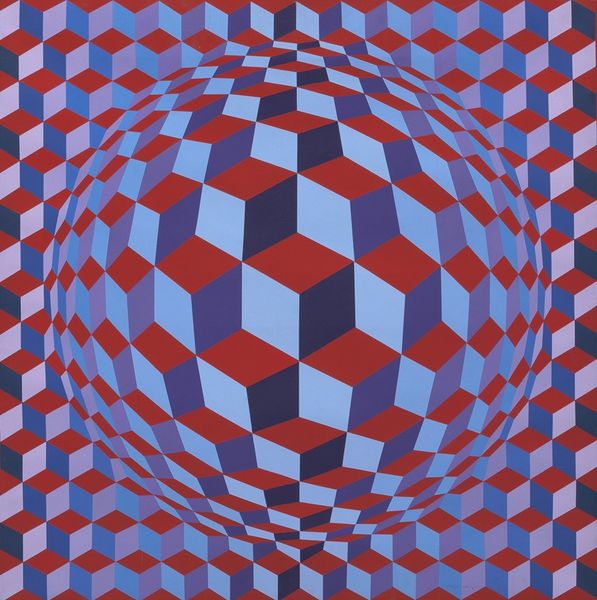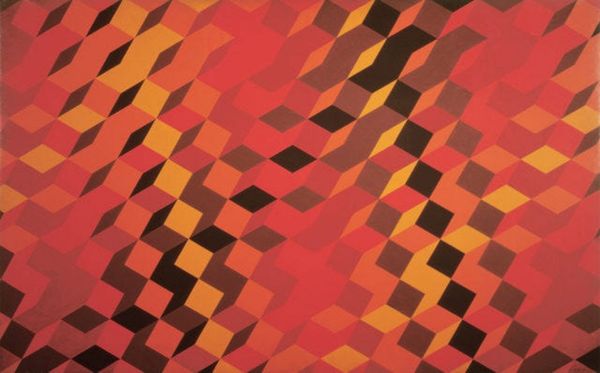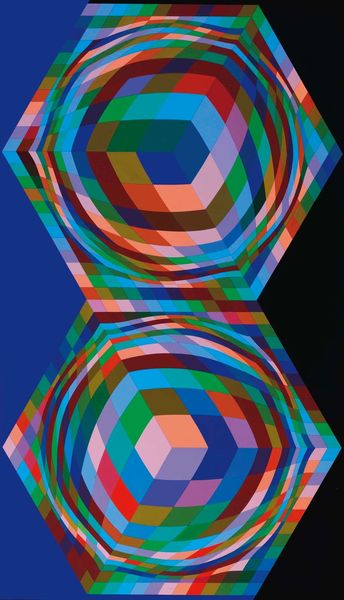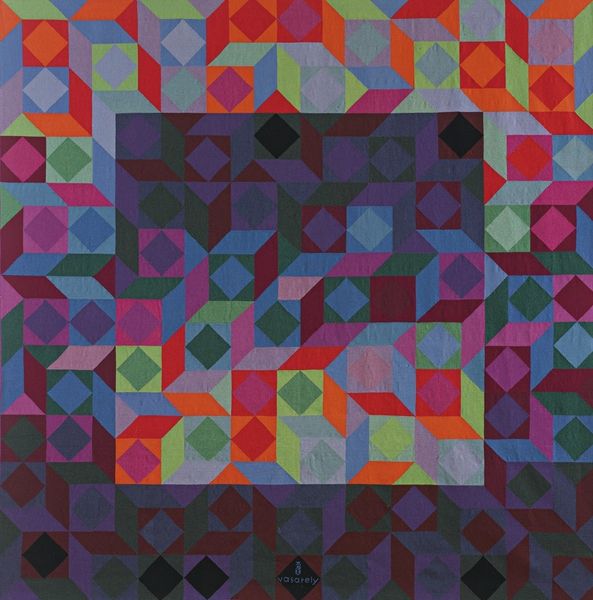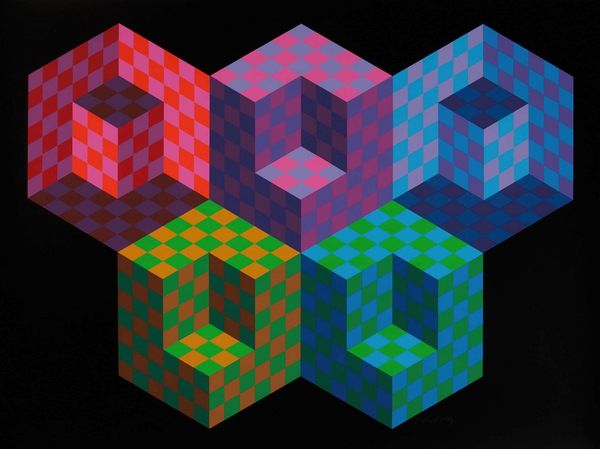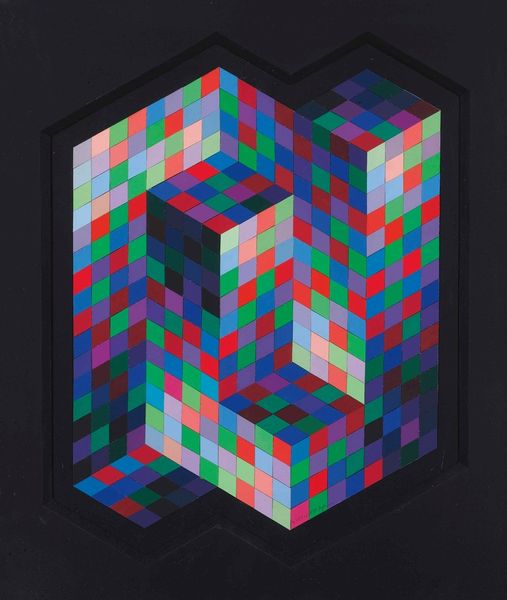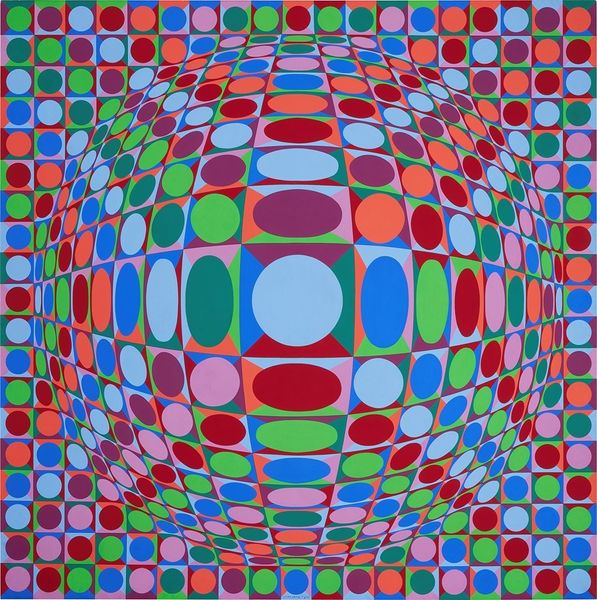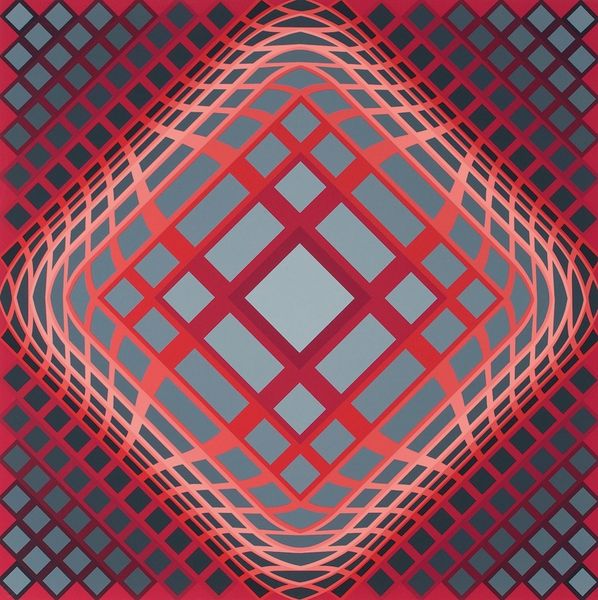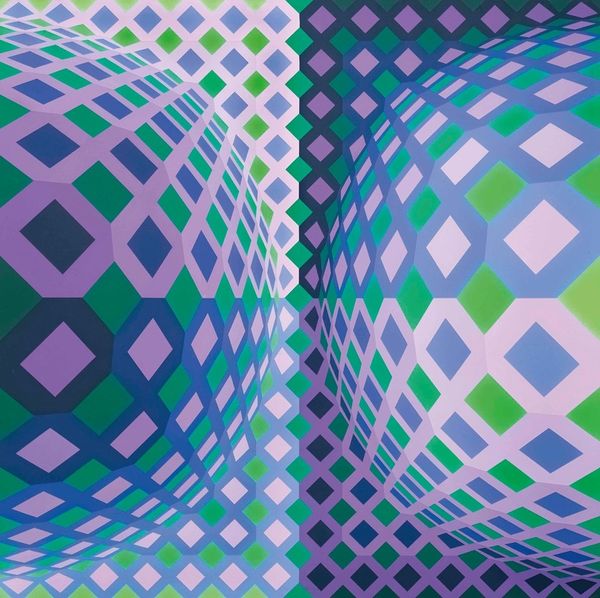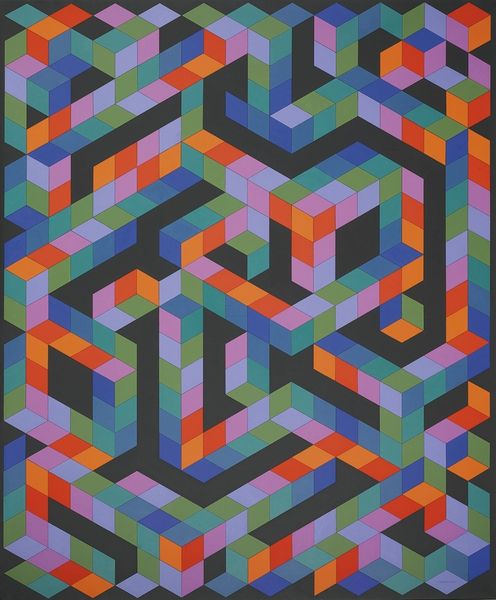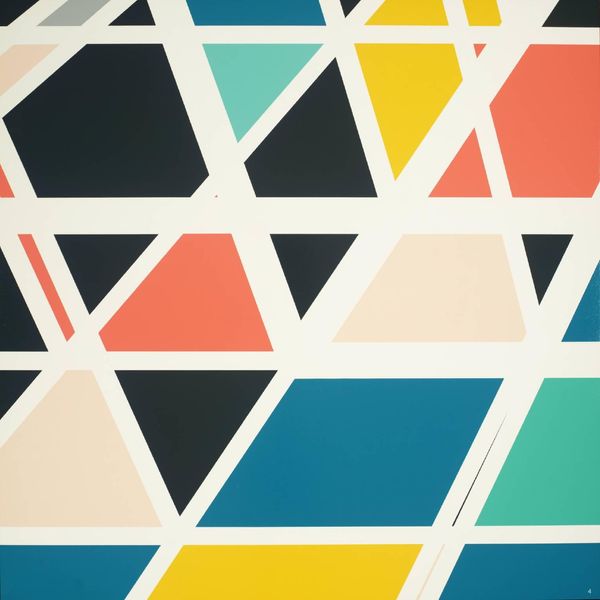
Copyright: Modern Artists: Artvee
Editor: This is Victor Vasarely’s "Dombokta," made with acrylic paint in 1973. It's visually stunning! The geometric shapes create a strong sense of three-dimensionality. What do you make of this work? Curator: Looking at this piece through a materialist lens, I am drawn to the technical process first, which often gets obscured by the immediate visual effect. Consider how the labor of painstakingly rendering each of those individual rhombuses to create an illusion is inherent in its meaning. And it is only painting -- pigment and canvas. What is being purchased, consumed? Editor: That's interesting! I hadn't thought about the labor involved. It does make me appreciate the precision even more. So you're saying the *act* of making becomes part of its value? Curator: Exactly. The industrial production techniques Vasarely employed, influenced by the rise of plastics and synthetic paints, enabled reproducible effects which changed the reception of abstract art during this era. Are we valuing "art," or masterful craft? Does it matter? Editor: It seems like Vasarely blurred the boundaries between art and industry. It makes you think about where artistic value really lies. Curator: Precisely. How did material availability shape Vasarely’s practice and subsequent audience response? That’s what stays with me. Editor: I learned a new approach, thinking about the material and process gives this a new angle, shifting from just visual enjoyment. Curator: And that shift allows for consideration about broader issues regarding commodification. Seeing and making in tandem.
Comments
No comments
Be the first to comment and join the conversation on the ultimate creative platform.


